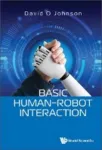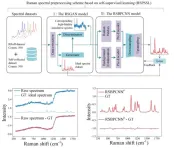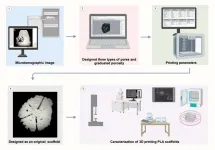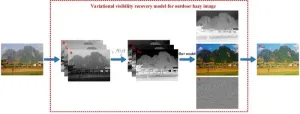Can you tell AI-generated people from real ones?
Research shows survey participants duped by AI-generated images nearly 40 per cent of the time
2024-03-06
(Press-News.org)
If you recently had trouble figuring out if an image of a person is real or generated through artificial intelligence (AI), you're not alone.
A new study from University of Waterloo researchers found that people had more difficulty than was expected distinguishing who is a real person and who is artificially generated.
The Waterloo study saw 260 participants provided with 20 unlabeled pictures: 10 of which were of real people obtained from Google searches, and the other 10 generated by Stable Diffusion or DALL-E, two commonly used AI programs that generate images.
Participants were asked to label each image as real or AI-generated and explain why they made their decision. Only 61 per cent of participants could tell the difference between AI-generated people and real ones, far below the 85 per cent threshold that researchers expected.
"People are not as adept at making the distinction as they think they are," said Andreea Pocol, a PhD candidate in Computer Science at the University of Waterloo and the study's lead author.
Participants paid attention to details such as fingers, teeth, and eyes as possible indicators when looking for AI-generated content – but their assessments weren't always correct.
Pocol noted that the nature of the study allowed participants to scrutinize photos at length, whereas most internet users look at images in passing.
"People who are just doomscrolling or don't have time won't pick up on these cues," Pocol said.
Pocol added that the extremely rapid rate at which AI technology is developing makes it particularly difficult to understand the potential for malicious or nefarious action posed by AI-generated images. The pace of academic research and legislation isn't often able to keep up: AI-generated images have become even more realistic since the study began in late 2022.
These AI-generated images are particularly threatening as a political and cultural tool, which could see any user create fake images of public figures in embarrassing or compromising situations.
"Disinformation isn't new, but the tools of disinformation have been constantly shifting and evolving," Pocol said. "It may get to a point where people, no matter how trained they will be, will still struggle to differentiate real images from fakes. That's why we need to develop tools to identify and counter this. It's like a new AI arms race."
The study, "Seeing Is No Longer Believing: A Survey on the State of Deepfakes, AI-Generated Humans, and Other Nonveridical Media," appears in the journal Advances in Computer Graphics.
END
ELSE PRESS RELEASES FROM THIS DATE:
2024-03-06
In a groundbreaking study published in Engineering, a collaborative team of researchers from Shanghai University and international experts have unveiled a cutting-edge approach to optimizing unmanned aerial vehicle (UAV) inspection routes and schedules for engineering projects. The research, led by Lu Zhen, Zhiyuan Yang, Gilbert Laporte, Wen Yi, and Tianyi Fan, introduces an innovative mixed-integer linear programming (MILP) model combined with a variable neighborhood search (VNS) algorithm, constructing a new approach in the field of engineering management.
The rapid development and adoption of UAV technology have opened new horizons for various industries, particularly ...
2024-03-06
Basic Human–Robot Interaction by Dr David O Johnson offers practical guidance and insights for conducting experiments in Human–Robot Interaction (HRI) and publishing the results in scientific journals. It includes a detailed explanation of how to conduct an HRI experiment and what to do and what not to do to get an article accepted for publication. It is tailored to those seeking to deepen their understanding of HRI methodologies, statistical measurements, and research design.
The book begins with an overview of HRI, unravelling the basics of how robots function, with a specific focus on the verbal and non-verbal aspects of influencing their interactions ...
2024-03-06
Raman spectral preprocessing
Raman spectroscopy detects the molecular bond information of the chemical components of the sample in situ in a non-destructive and label-free manner (Terms >>>). It is an emerging metabolic-related spectromics technology in biological and clinical medical research and is expected to promote the evolution of precision medicine. At present, Raman spectroscopy is applied in biomedical detections of body fluids, exosomes, cells/microbes, and tissues, among which Raman ...
2024-03-06
This article was directed and written by Dr. Lucía Pérez Sánchez, Ldi. Misael A. Ortiz de la O, Dr. Marco Antonio Álvarez Pérez and Dr. Janeth Serrano Bello (Laboratorio de Bioingeniería de Tejidos, División de Estudios de Posgrado e Investigación, Facultad de Odontología, UNAM) Dra. Monserrat Llaguno Munive (Laboratorio de Física Médica, Subdirección de Investigación Básica, Instituto Nacional de Cancerología) and Dr. Osmar A. Chanes Cuevas (Laboratorio de Investigación ...
2024-03-06
Holography technology can restore the complete light field information of the recorded object, which has important applications in fields like biological microscopic imaging and optical micromanipulation. One important frontier of holography is the reconstruction of realistic 3D scenes. However, the development and application of holographic technology have been hindered by the huge amount of data of the 3D scenes and the laser coherence, which leads to the slow capturing speed of the real 3D scenes ...
2024-03-06
Under real-world haze conditions, the captured images not only suffer from the haze but also are affected by the noise, which significantly deteriorates the visibility of images. However, most of existing haze removal methods mainly focus on the haze degradation and fail to consider the noise interference.
To address the above issue, a research team led by Hailing XIONG and Yun LIU published their new research on 15 Feb 2024 in Frontiers of Computer Science co-published by Higher Education Press and Springer Nature.
The team proposed a novel unified variational model consisting of multiple effective constraints that simultaneously ...
2024-03-06
SAN DIEGO–—Elephants are the natural carriers of a virus called Elephant Endotheliotropic Herpesvirus (EEHV) that can, for yet unknown reasons, cause profound clinical signs in some young elephants and be rapidly fatal. For nearly two decades, zoos and university partners have been working to study the virus and develop early detection protocols and treatment options.
Veterinarians and clinical pathology researchers at San Diego Zoo Wildlife Alliance (SDZWA) and the University of Copenhagen, Denmark, have recently made an important discovery, now published in the March 2024 Journal of Zoo and Wildlife Medicine. They found that population-based reference ...
2024-03-06
Sports coaches could strengthen athletes’ mental health and protect them from mental illness – by adopting an ‘authentic leadership’ style, a new study reveals.
Researchers found when athletes perceived that their coach engaged in behaviours such as openly sharing information, showing understanding of their strengths and weaknesses, acting in an ethical manner, and listening to alternative perspectives, they felt happier and dealt with problems more easily.
Publishing their findings today (6 March) in Psychology of Sport and Exercise, experts from the University of Birmingham reveal ...
2024-03-06
Every year, more than one million deaths globally occur because of exposure to short-term (hours to days) fine particulate matter (PM2.5) in air pollution, according to a new report, with Eastern Asia reporting more than 50% of deaths attributable to short-term PM2.5 globally.
To date most studies have focused on the health impacts of living in cities where pollution levels are consistently high, ignoring the frequent “spikes” in pollution that can impact smaller urban areas that occur for instance landscape fires, dust, and other intermittent ...
2024-03-06
Living in leafy areas near gardens, parks, and green spaces, may boost bone density and lower the risk of osteoporosis, finds research published online in the Annals of the Rheumatic Diseases.
Lower levels of air pollution in green spaces is a significant contributory factor to the associations found, conclude the researchers.
Osteoporosis weakens bones, making them fragile and prone to fracture. It can lead to chronic pain, diminished mobility, and poorer quality of life. Already a major health issue worldwide, its global prevalence is set to rise with the rapid ageing of the population and changes in ...
LAST 30 PRESS RELEASES:
[Press-News.org] Can you tell AI-generated people from real ones?
Research shows survey participants duped by AI-generated images nearly 40 per cent of the time






